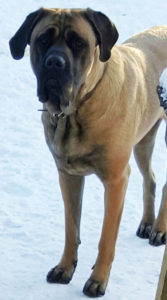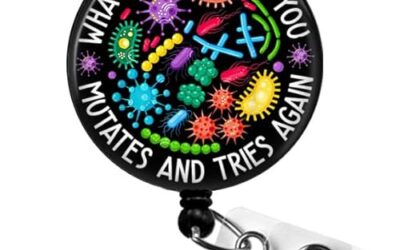
Lucy (Laurie K, Technical Marketing Specialist)
It’s the American Veterinary Medical Association National Pet Week®! As pet lovers and microbiologists, this got us thinking about the different types of diseases that can make our furry friends sick.
For this blog post, we have compiled a list of common ailments in cats and dogs along with the microorganisms that cause them. We have also included some helpful tips for keeping your pets healthy and happy.
As a special feature, we have included some fun photos of Microbiologics employees’ pets. Enjoy!
Infectious canine tracheobronchitis or kennel cough is a respiratory disease most commonly caused by Bordetella bronchiseptica, canine adenovirus, parainfluenza virus, mycoplasma or a combination of any of these microorganisms. It can occur after your dog spends time at a kennel.
Kennel cough is highly contagious. Symptoms include a persistent cough, retching and a watery nasal discharge. In some cases the disease can progress to pneumonia. For mild symptoms, resting is recommended. For severe symptoms caused by a bacterial infection, the veterinarian may prescribe antibiotics such as doxycycline or trimethoprim-sulfa. In order to reduce chances of becoming ill with the disease, dogs are often given an intranasal vaccine containing both parainfluenza and Bordetella.

Jari and Pinot (Kali S, Technical Support Specialist)
Otitis externa or ear infections are often caused by Staphylococcus, Streptococcus, Pseudomonas aeruginosa, Malassezia pachydermatis and Candida. Symptoms include odor, redness and discharge in the ear and head shaking, scratching or pawing at the head or ear. Allergies can predispose dogs to infection by changing the environment in the ear. Floppy ears, such as those on Cocker Spaniels, can provide warm, moist conditions in which bacteria can grow.
To prevent ear infections, veterinarians recommend cleaning your dog’s ears once a week or more. Clipping hair around the base of the ear can also be helpful. Allergies can be treated with antihistamines, corticosterioids and immunotherapy.
If the ears appear infected, the veterinarian will take a swab of the ear, smear it on a microscope slide, stain and examine it for bacteria, yeast and mites. Ears infected with bacteria can be treated with antibiotics, and ears infected with yeast can be treated with antifungals. If ears do not improve, a culture and antibiotic susceptibility testing may be performed.

Bernie and Avery (Laurie F, Associate MarComm Manager)
Blastomycosis is a systemic disease that often begins when dogs inhale the spores of Blastomyces dermatitidis. The dimorphic fungus lives in damp, moist conditions such as those found in decaying wood near swamps, lakes and rivers. The microorganism is found in the Mississippi, Missouri, and Ohio River valleys; the Middle Atlantic states; southern Saskatchewan; Manitoba; Quebec; and Ontario.
Dogs that enjoy sniffing and digging in the soil are at risk of being exposed to the organism. Blastomycosis is frequently seen in large breed, male sporting dogs.
The disease begins in the lungs and then often spreads by way of hematogenous or lymphatic routes to other body tissues such as lymph nodes, eyes, skin and bone. Symptoms include fever, weight loss, difficulty breathing and eye discharge.
There are several methods used for diagnosis. One method is to examine fine-needle aspirates from infected lymph nodes for yeast cells. Drugs most often recommended to treat dogs with blastomycosis are amphotericin B and the azole antifungals such as fluconazole and voriconazole.

Suki (Laurie K, Technical Marketing Specialist)
Giardiasis is transmitted by the protozoa, Giardia duodenalis also known as Giardia intestinalis or Giardia lamblia. Dogs and cats can ingest cysts by drinking contaminated water or any substance contaminated with feces. Not all animals get sick but if they do, diarrhea and weight loss are common symptoms.
Once inside the animal, the cyst transforms into a trophozoite with flagella. The trophozoite attaches to the intestinal wall. After a number of divisions, the trophozoite changes into a cyst. The cyst returns to the environment through the feces and the cycle begins again.
Giardia is commonly diagnosed through microscopy or through an ELISA Test. It is treated with an anti-parasitic drug. To prevent the illness, always have clean water on hand for pets.

Elsie (Laura B, Marketing Cooridnator)
Toxascaris leonine is a roundworm that infects both cats and dogs. If you are a pet owner, you may have had the unfortunate experience of seeing the spaghetti-like pale worms in your pet’s feces.
Animals can become infected if they consume feces contaminated with roundworm eggs, ingest dirt contaminated with infected feces or eat an infected mouse.
If eggs are ingested, they hatch into larvae and grow into adult worms in the small intestine. When the adult worm lays eggs, the eggs are passed through the feces and the cycle begins again.
The cycle is different when an infected mouse is eaten. The cycle begins with the mouse ingesting roundworm eggs. The eggs hatch and the larvae migrate to the tissues of the rodent. The cat or dog becomes infected when they consume the larvae in the tissue.
Toxascaris leonine is identified by examining a stool specimen microscopically. Animals found positive for the parasite are treated with a wormer effective against the parasite. Since the wormer only kills adult worms, the treatment must be repeated after two weeks. This gives the larvae time mature into adults. Some heartworm preventatives ward off or control roundworm infections.

Omelet, Maximus Decimus Meridius and Ditters (Amanda Y, Proficiency Manager)
Periodontal disease is one of the most common diseases seen in cats and dogs. It can cause chronic pain, eroded gums, missing teeth and bone loss. It begins when bacteria in plaque move under the gum line.
Many of the bacteria which cause the disease are anaerobic. Species include Actinobacillus actinomycetemcomitans, Bacteroides asaccharolyticus, Fusobacterium nucleatum, Eikenella corrodans, Porphyromonas gingivalis and Actinomyces viscous. If the bacteria reach the blood supply to the teeth, they can damage the heart, kidneys and liver.
Veterinarians encourage pet owners to routinely brush their animal’s teeth. Chew toys can also prevent plaque build-up.
Leptospirosis is caused by serovars of Leptospira interrogans. There are many serovars – two common ones are Leptoprirosa interrogans subsp. Grippotyphosa and Leptospira interrogans subsp. Pomona.

Murdoch (Kaylan N, Clinical Market Manager)
Leptospirosis is more common in dogs than in cats. During an infection, the spirochete spreads throughout the body. Symptoms of an infection may include fever, chills, lethargy, lack of appetite and vomiting. The microorganism can cause severe damage if it spreads to the liver or kidneys.
Leptospira bacteria are found in marshy areas frequented by wildlife. Dogs can acquire the illness from drinking or wading through water contaminated with the spirochete or from coming in contact with the urine of an infected animal.
To diagnose the disease, the veterinarian may perform serology tests. Acute and convalescent titers may be taken. In some cases, PCR may be used to identify the microorganism. Other tests may include a chemical blood profile, a complete blood count and a urinalysis.
Treatment includes rest, fluid treatment and antibiotics. Very ill dogs may be hospitalized. If your dog has leptosprirosis, you should wear gloves when cleaning up after your pet because the disease is a zoonosis – meaning it can be transmitted to humans.
There are vaccines available but they do not protect against all serovars or offer long-time protection.
Summary
| Illness | Agent(s) | Prevention/Treatment |
| Infectious canine tracheobronchitis |
|
Your Veterinarian can administer an intranasal vaccine |
| Otitis externa |
|
|
| Blastomycosis | Blastomyces dermatitidis | Contact your veterinarian if your dog shows symptoms |
| Giardiasis | Giardia duodenalis also known as Giardia intestinalis or Giardia lamblia |
|
| Toxascaris leonine | Toxascaris leonine | Veterinarian can treat your pet for worms |
| Periodontal disease |
|
|
| Leptospirosis | Several serovars of Leptospira interrogans | Contact your veterinarian if your dog shows symptoms |

Major (Michelle P, Customer Service Representative)
Check out the National Pet Week website to find resources for pet owners.
Looking for a pet? Adopting is a great option. These websites can help you search for your new best friend:
- Pet Finder (US)
- The Shelter Pet Project (US)
- ASPCA (US)
- Adopt a Pet (US)
- Global Animal (US and Canada)
- Rescue Dogs Europe (Europe)
Resources
- Kennel Cough in Dogs:Infectious Canine Tracheobronchitis
- Foster & Smith Educational Staff. Kennel Cough (Infectious Tracheobronchitis) in Dogs.
- Foster & Smith Educational Staff. Ear Infections (Otitis Externa) & Ear Cleaning in Dogs.
- Inflammation of the Middle Ear and External Ear Canal in Dogs
- Moriello, Karen A. DVM, DACVD. The Merck Veterinary Manual. Overview of Otitis Externa. 2013
- Gaunt, Casey M. DVM, Taylor, Susan M. DVM, DACVIM. DVM360. Canine blastomycosis: a review and update on diagnosis and treatment. 2009
- Foster & Smith Educational Staff. Giardia (Giardia canis)
- Patton, Sharon, MS, PhD. The Merck Veterinary Manual. Overview of Giardiasis. 2013
- Foster & Smith Educational Staff. Roundworms (Toxascaris leonina, Toxocara canis).
- AVDC, American Veterinary Dental College. Periodontal Disease. 1988
- Long Beach Animal Hospital. Dental Disease. 2015
- Lunn, Katharine f. BVMS, MS, PhD, MRCVS, DACVIM. Leptospirosis in Dogs. The Merck Veterinary Manual.2015
- Foster & Smith Educational Staff. Leptospirosis in Dogs






Canines are the initially trained creatures that have been broadly kept as working, chasing, and pets. As per late coarse assessments, there are right now between 700 million and one billion canines, making them the most inexhaustible predators on the planet. We individuals see canines as our closest companions. Therefore, ensuring dogs, our best friends, from deseases ought to be recorded among the list of biopharmaceutical examination.